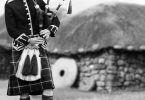What do you know about DNA and genealogy? It is something that is becoming more important to genealogical research now that it is easily available and affordable to the average researcher. Beginners and experienced genealogists alike can use it to accurately add to their family tree and to confirm relationships on it. If you are not yet using it, you should be. It is a hugely useful genealogical tool. Just remember, there are three types of DNA you can have tested, and each one will benefit your tree in a different kind of way.
This conversation will discuss the first two types of genealogical tests that were available to researchers — Y-DNA and mtDNA. While most companies that test DNA today use autosomal DNA (which we will discuss in another conversation), Y-DNA and mtDNA still have important uses, and some companies still test them (like FamilyTree DNA). You should, ideally, have all three types of your DNA tested to get the full picture of your ancestral origins and the true appearance of your totally unique family tree.
Y-DNA is the first type of DNA test that was readily available to the public. Only men can take a Y-DNA test, as only men have Y-DNA. They inherit it from their fathers, and Y-DNA remains relatively unchanged down the generations, often for millennia. It is an excellent test for proving paternity, determining the origins of your father’s side of the family, and determining the birth family if any male’s biological father in your family tree is unknown.
Let’s say you have a grandfather on your father’s side who was raised by a step-dad, and his biological father is unknown. If you are a male, you can take a Y-DNA test, and it will match you up with others in your grandfather’s biological father’s family who have also taken the test with that company. If you are female, you can get a direct male-line relative to your grandfather, such as one of his sons or grandsons, to take the test for you.
The other type of DNA we are discussing is mtDNA. This is the DNA you inherit down the female line of your family. Both men and women can have their mtDNA tested, as men receive one copy of mtDNA from their mothers (and one copy of Y-DNA from their fathers), and women receive two copies of mtDNA from their mothers (and no Y-DNA from their fathers). Because female surnames change each generation as they marry, this test is not as useful for determining unknown biological parents as the Y-DNA test is, but it has other uses.
You can use mtDNA to determine where the female line of your family started, or even to help you discover some heretofore unknown direct-line female ancestors. Either of these things can help you fill in some important blanks on your family tree. You can also use it to confirm contemporary female-line relationships.






